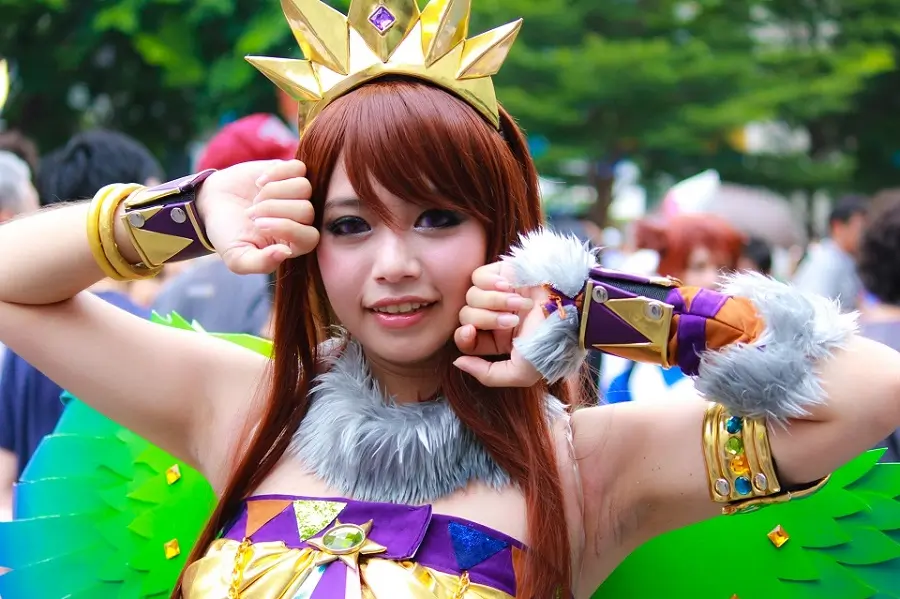
Picture this: A teenager in Tokyo spends their entire weekend binge-watching anime, carefully organizing their manga collection, and discussing plot theories with friends online. Halfway across the world, a college student in New York does exactly the same thing. This is the power of otaku culture—a phenomenon that has transcended borders, languages, and generations to become one of the most influential subcultures of our time.
The word “otaku” once carried a heavy stigma in Japan, referring to someone with obsessive interests who might struggle with social interactions. Today, it represents a passionate community of millions worldwide who celebrate Japanese pop culture with unprecedented enthusiasm. But how did this transformation happen, and what does it mean for the future of global entertainment?
The Origins: From Stigma to Celebration
The term “otaku” originated in Japan during the 1980s, initially used as a polite way to address someone as “you” before evolving into a label for people with intense hobbies or interests. The Japan Society notes that early otaku were often portrayed negatively in media, associated with social awkwardness and unhealthy obsessions.
However, the narrative began shifting in the 1990s as anime and manga gained mainstream recognition. Series like “Neon Genesis Evangelion” and “Dragon Ball Z” demonstrated that these mediums could tackle complex themes and attract diverse audiences. What started as a niche interest gradually became a legitimate form of entertainment that resonated with people across different age groups and backgrounds.
The transformation wasn’t overnight. Many early otaku faced judgment from family and peers, leading to the development of tight-knit communities where members could share their passion without fear of ridicule. These communities became the foundation for what would eventually become a global movement.
The Digital Revolution: Building Bridges Across Continents
The internet changed everything for otaku culture. Online forums, streaming platforms, and social media created unprecedented opportunities for fans to connect, share content, and discover new series. Crunchyroll, which started as a fan site in 2006, exemplifies this transformation—evolving from a small community platform to a major streaming service with millions of subscribers worldwide.
Digital platforms eliminated geographical barriers that once limited access to anime and manga. Fans no longer needed to wait months for dubbed versions or hunt down rare imported merchandise. Simulcasting allowed global audiences to watch new episodes simultaneously with Japanese viewers, creating a shared cultural experience that transcended borders.
Social media platforms like Twitter, Reddit, and TikTok became virtual gathering spaces where otaku could discuss theories, share fan art, and celebrate their favorite characters. These platforms also gave creators direct access to their international fanbase, fostering a more intimate relationship between artists and audiences.
Economic Impact: The Billion-Dollar Industry
The economic influence of otaku culture extends far beyond entertainment. According to Statista, the global anime market was valued at over $24 billion in 2023, with projections suggesting continued growth. This figure encompasses not just anime and manga sales, but also merchandise, gaming, tourism, and related industries.
Japan’s “Cool Japan” initiative, supported by the government, actively promotes otaku culture as a form of soft power diplomacy. Cities like Tokyo and Osaka have developed dedicated districts catering to otaku tourists, generating billions in revenue annually. The Japan National Tourism Organization reports that anime and manga-related tourism accounts for a significant portion of international visitors to Japan.
The ripple effects extend to local economies worldwide. Anime conventions, which were once small gatherings in hotel conference rooms, now attract hundreds of thousands of attendees and generate millions in revenue for host cities. Comic-Con International in San Diego, for example, contributes an estimated $140 million annually to the local economy.
Cultural Integration: Beyond Entertainment
Otaku culture’s influence extends into fashion, language, and social behavior. Japanese fashion trends like “kawaii” (cute) culture and “cosplay” (costume play) have become mainstream in many countries. Harajuku fashion, characterized by bold colors and creative expression, has inspired fashion designers worldwide.
Language adoption represents another fascinating aspect of cultural integration. Terms like “kawaii,” “senpai,” and “waifu” have entered everyday vocabulary among young people globally. This linguistic borrowing demonstrates how deeply otaku culture has penetrated mainstream consciousness.
The concept of “omotenashi” (Japanese hospitality) has also influenced how otaku communities interact. Many online communities emphasize respect, politeness, and inclusivity—values that reflect traditional Japanese social norms adapted for digital spaces.
Demographic Evolution: Breaking Stereotypes
Modern otaku culture defies traditional stereotypes about its participants. Research by The Anime Industry Report reveals that anime viewers span all age groups, with significant representation among women, professionals, and families. The typical otaku is no longer the socially isolated teenager of popular imagination.
Women constitute a major portion of the otaku community, particularly in genres like “shoujo” (aimed at young women) and “josei” (aimed at adult women). Female fans have driven the popularity of series like “Sailor Moon” and “Attack on Titan,” demonstrating that otaku culture appeals across gender lines.
Parents who grew up with anime are now introducing their children to the medium, creating multi-generational fan families. This intergenerational transmission has helped normalize otaku interests and reduced the stigma once associated with adult anime consumption.
The Comparison: Traditional vs. Modern Otaku Culture
| Aspect | Traditional Otaku (1980s-1990s) | Modern Otaku (2000s-Present) |
|---|---|---|
| Social Perception | Heavily stigmatized, seen as antisocial | Increasingly accepted and mainstream |
| Community | Small, isolated local groups | Global networks via internet platforms |
| Access to Content | Limited, expensive imports | Instant streaming, legal platforms |
| Gender Distribution | Predominantly male | Balanced across genders |
| Age Range | Primarily teenagers and young adults | All age groups, including families |
| Cultural Impact | Minimal outside Japan | Significant global influence |
| Economic Scale | Niche market | Multi-billion dollar industry |
| Content Variety | Limited genres available | Diverse content for all interests |
Global Adaptation: How Different Cultures Embrace Otaku
The way otaku culture manifests varies significantly across different countries and regions. In South Korea, the influence has blended with local “hallyu” (Korean Wave) culture, creating hybrid entertainment forms. Korean Cultural Centers report increasing collaboration between Japanese and Korean entertainment industries.
In Western countries, otaku culture has merged with existing fan communities around comic books, science fiction, and fantasy. This fusion has created new subcategories like “western otaku” who consume both Eastern and Western animated content with equal enthusiasm.
Latin American countries have shown particularly strong adoption of otaku culture, with countries like Mexico and Brazil hosting some of the world’s largest anime conventions outside of Japan. The cultural similarity in family values and storytelling traditions may explain this strong resonance.
The Future: Technological Integration and Expansion
Virtual reality and augmented reality technologies are opening new frontiers for otaku culture. Virtual reality arcades in Japan already offer immersive anime experiences, while AR applications allow fans to interact with their favorite characters in real-world settings.
Blockchain technology and NFTs are creating new ways for fans to collect and trade digital merchandise. Some anime studios are experimenting with NFT releases of exclusive content, though this remains controversial within the community.
Artificial intelligence is beginning to impact content creation, with AI-generated anime art and even experimental AI-written manga appearing online. While purists debate the artistic merit of AI-created content, it represents another evolution in how otaku culture adapts to technological change.
Frequently Asked Questions
Q: What exactly does “otaku” mean today? A: Today, “otaku” generally refers to someone with passionate interests in anime, manga, video games, or other aspects of Japanese pop culture. While it once carried negative connotations, it’s now often used as a neutral or even positive term for dedicated fans.
Q: Is otaku culture only about anime and manga? A: No, modern otaku culture encompasses video games, light novels, visual novels, Japanese music (J-pop, J-rock), fashion, and even aspects of Japanese cuisine and language. It’s a broader appreciation for Japanese cultural products.
Q: How has streaming changed otaku culture? A: Streaming platforms have democratized access to anime, eliminated geographical barriers, and created global simultaneous viewing experiences. This has unified the global otaku community and reduced piracy while supporting creators.
Q: Are there negative aspects to otaku culture? A: Like any passionate community, otaku culture can sometimes involve unhealthy behaviors like excessive consumption, social isolation, or unrealistic expectations. However, most participants engage in a balanced way that enriches their lives.
Q: How do I get started in otaku culture? A: Start by exploring different anime genres on streaming platforms, joining online communities, attending local conventions, or visiting anime-themed cafes and stores. The community is generally welcoming to newcomers.
Q: What’s the difference between otaku culture and regular anime fandom? A: The terms are often used interchangeably now, but traditional otaku culture implies deeper involvement—collecting merchandise, attending events, learning Japanese, or engaging in creative activities like cosplay or fan art.
Q: Is otaku culture changing Japanese society? A: Yes, otaku culture has influenced Japanese society by making niche interests more socially acceptable, contributing significantly to the economy, and serving as a form of cultural diplomacy that enhances Japan’s global image.
Conclusion: The Endless Evolution of Passion
The journey of otaku culture from a stigmatized niche to a global phenomenon reveals something profound about human nature and cultural exchange. What began as a way to describe obsessive fans has evolved into a celebration of passion, creativity, and community that spans continents and generations.
The transformation isn’t just about entertainment—it’s about how dedicated communities can reshape perceptions, drive economic growth, and create cultural bridges between seemingly disparate societies. The otaku who once hid their interests in shame now proudly share their passion with millions of like-minded individuals worldwide.
As we look toward the future, otaku culture will undoubtedly continue evolving. New technologies will create fresh ways to engage with content, while changing social attitudes will further normalize passionate fandom. The integration of virtual and augmented reality, the rise of user-generated content, and the growing acceptance of diverse interests suggest that otaku culture’s influence will only expand.
For those observing from the outside, otaku culture offers valuable lessons about the power of authentic passion and community building. For those within the culture, it represents an ongoing journey of discovery, creativity, and connection that transcends traditional boundaries.
The story of otaku culture is ultimately a story about transformation—of individuals finding their tribes, of niche interests becoming mainstream, and of cultural barriers dissolving in the face of shared enthusiasm. As this culture continues to grow and evolve, it will undoubtedly continue surprising us with its creativity, resilience, and ability to bring people together across any divide.
Whether you’re a longtime otaku or someone just discovering this vibrant community, remember that culture is not a destination but a journey. The next chapter of otaku culture is being written right now, by every fan who shares their passion, every creator who tells their story, and every person who finds connection through the universal language of imagination and enthusiasm.

